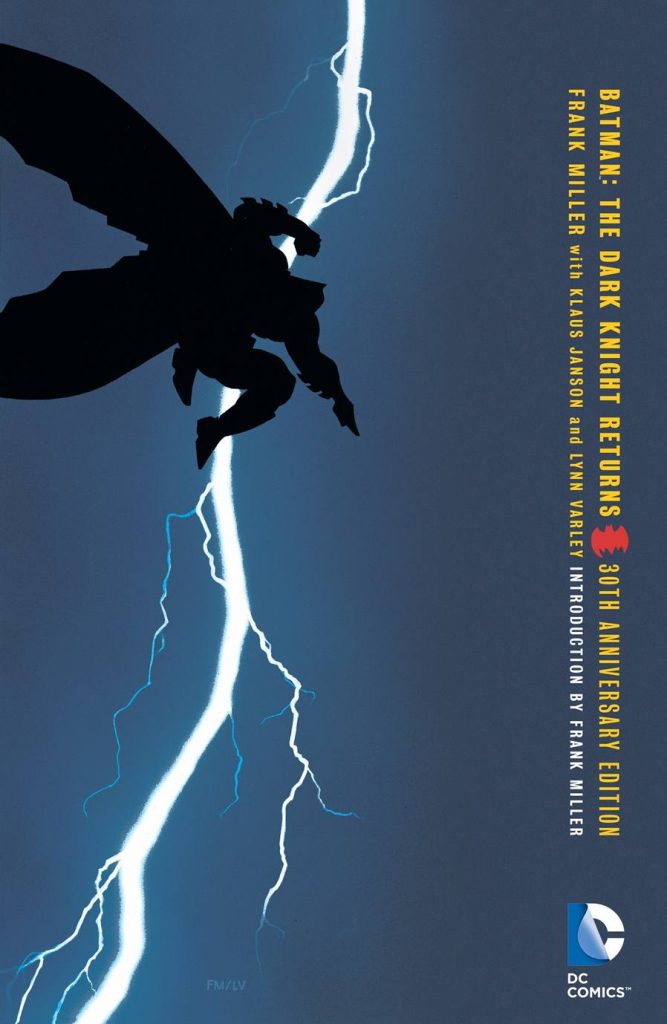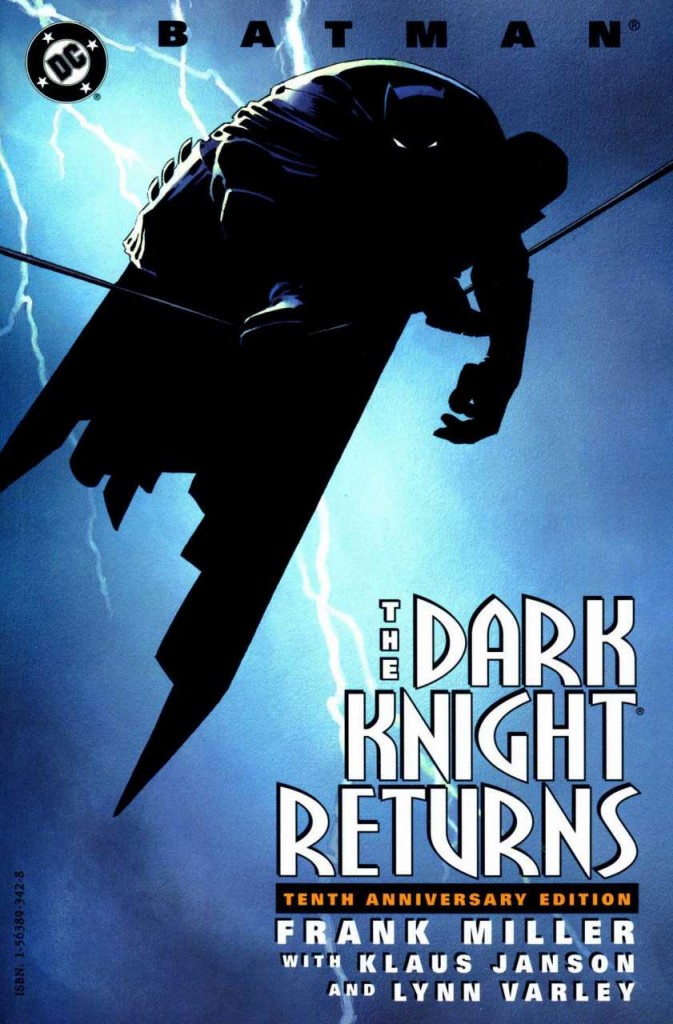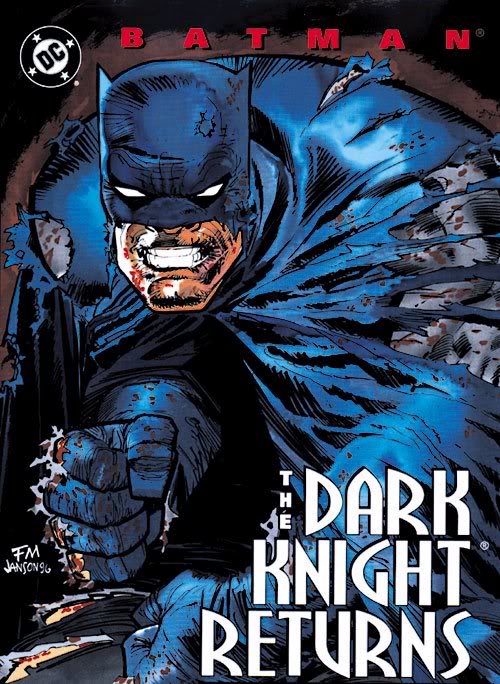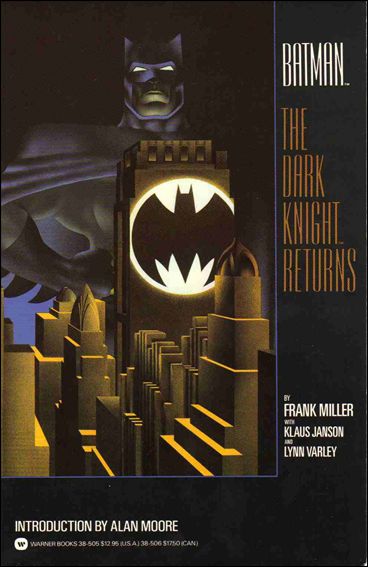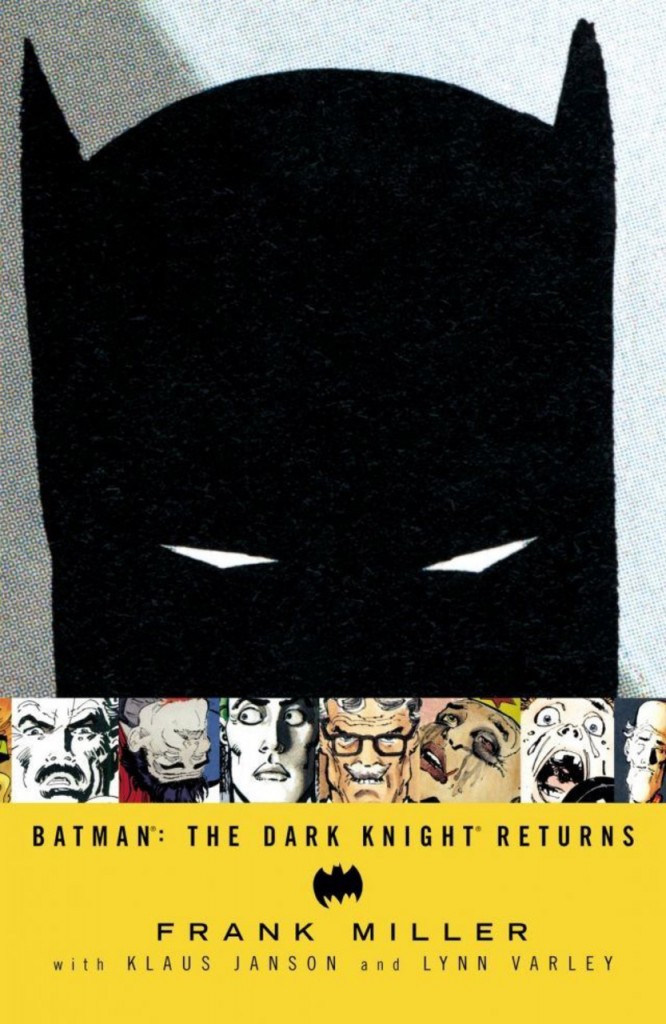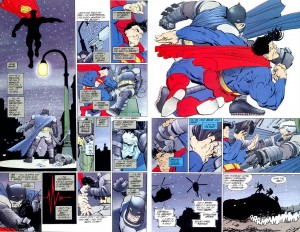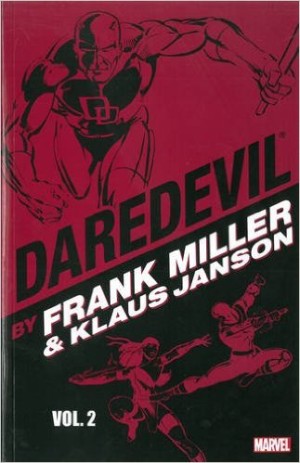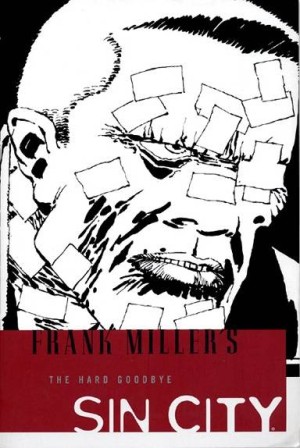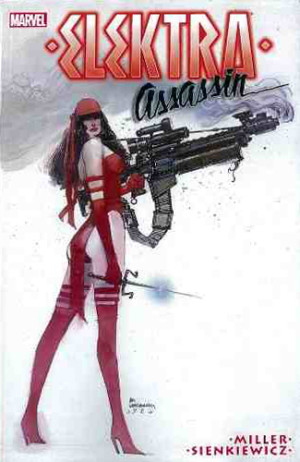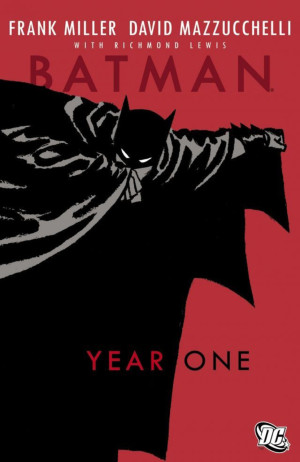Review by Jack Kibble-White
Age has wearied it a little, but Frank Miller’s The Dark Knight Returns is still the greatest caped crusader comic strip of all time. It’s one of three comic book tent poles of the 1980s (the other two being Alan Moore and Dave Gibbons’ Watchmen and Art Spiegelman’s Maus) that ushered in an era of mainstream respectability for the form. It also proved to be the catalyst for a whole movement, in which superheroes became grim, gritty and entirely humourless. Resultantly, for those who weren’t there at the time Miller’s opus was released, it’s difficult now to appreciate the scope of what he achieved.
Apart from the immediate impact of its publishing format (square-bound and glossy and a departure from the then usual disposably pulpy publication form), the first chapter takes a while to amp up. The world it inhabits is set some years in the future. A Reagan-esque figure is President and a gang called The Mutants rampage across Gotham City. Much like Miller’s earlier work on Daredevil, our main characters conduct perpetual inner monologues, but this time their chatter is constantly interrupted by the steady flow of asinine news reporters laying in the plot and making it abundantly clear what a vapid place Gotham has become.
Miller is strong on noir and it’s those sensibilities that come to the fore. His artwork regularly intersperses the action with beautiful silhouettes of our hero that not only look cool, but mythic too. And the power of myths to affect change is really what The Dark Knight Returns is about. We see how The Mutants recast themselves in Batman’s image and take his spirit of evangelism to a whole new, hedonistically violent level. Similarly animated by the re-emergence of Batman, 13-year old Carrie Kelley assumes the role of perennial sidekick Robin, while even The Joker can return from a state of catatonia when galvanised by the return of his arch-enemy.
It’s only fitting then, that the ultimate battle that Batman faces is with the greatest mythological figure of them all. Miller’s take on Superman is pretty much the greatest evocation of that character as unquenchable power source seen in a comic book. Aligning Superman with nuclear Armageddon feels like a very 1980s thing to do, but – again – it makes for a stunning visual. Here Superman is cast as the seemingly unquestioning soldier of a corrupt American government and so his conflict with Bruce Wayne is the logical conclusion of the rise in power of Batman and the rebirth of his particular sense of justice. Superman stands for the existing structures of power, whereas Batman’s beliefs force him to seek justice by any means necessary.
Throughout, the artwork is sensational – a wonderful synthesis of Miller, inker Klaus Janson and colourist Lynn Varley. Inventively stylised, fizzing with energy and gloriously cartoonish, it’s a step up from anything Miller has achieved before or since. Sound effects are used liberally and with great panache, while the odd fancy scene transition is the cherry on the cake.
Over the years some of the lustre of The Dark Knight Returns has faded. In part because Miller’s later work has turned out to be a disappointment, and in part because its whizz bangs haven’t matured quite as sweetly as, say, Watchmen. But mostly because its grim and gritty style was redeployed by less talented comic creators time and time again, until much that was striking about Miller’s masterpiece came to be viewed as self-parody. But return to this book on its own terms and it can still deliver.
